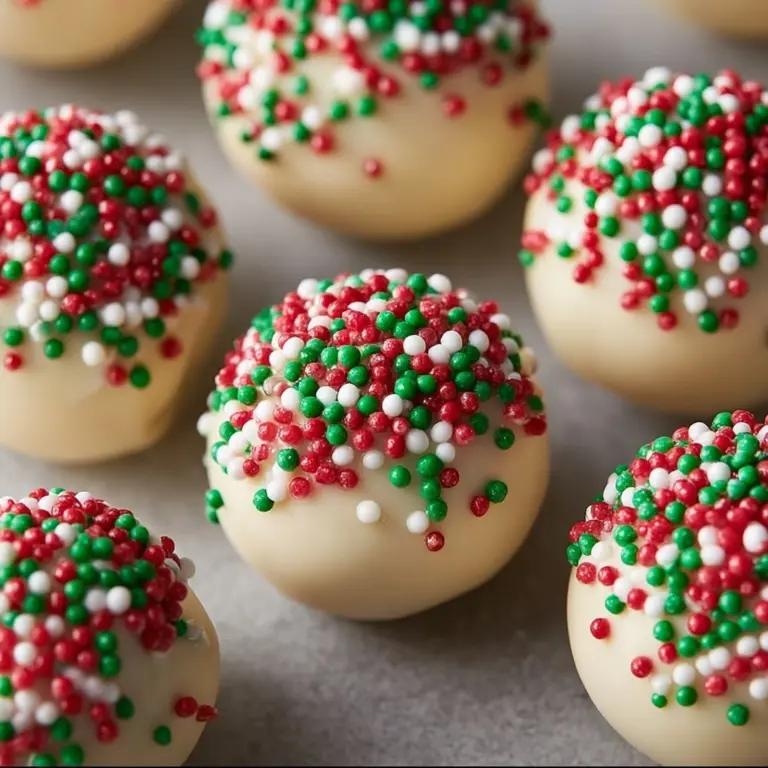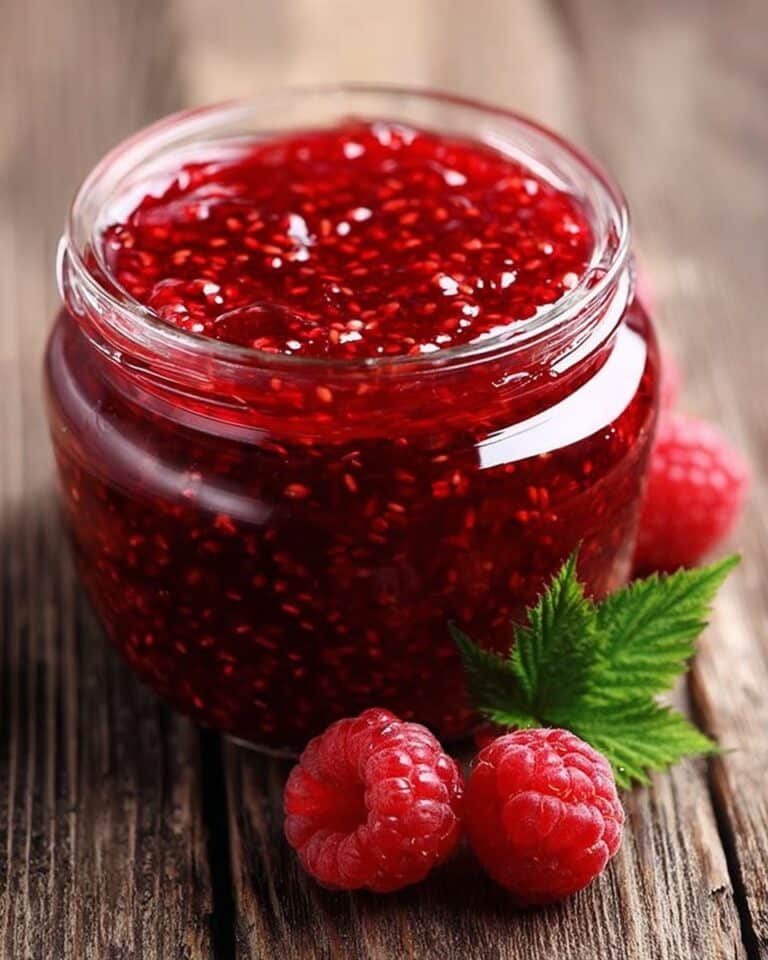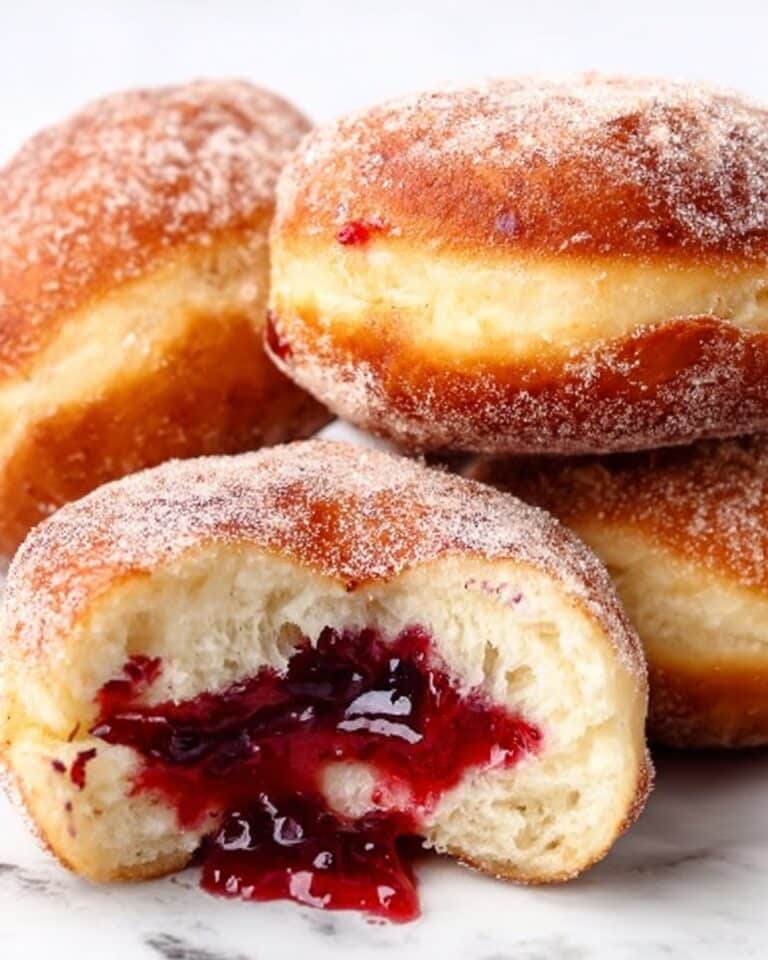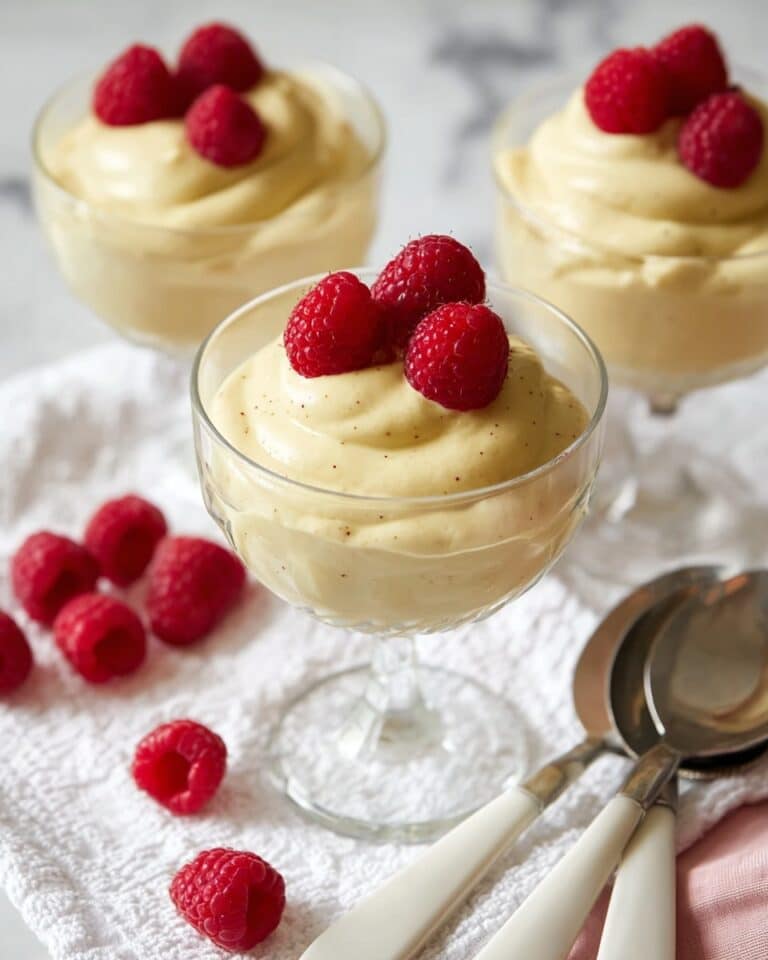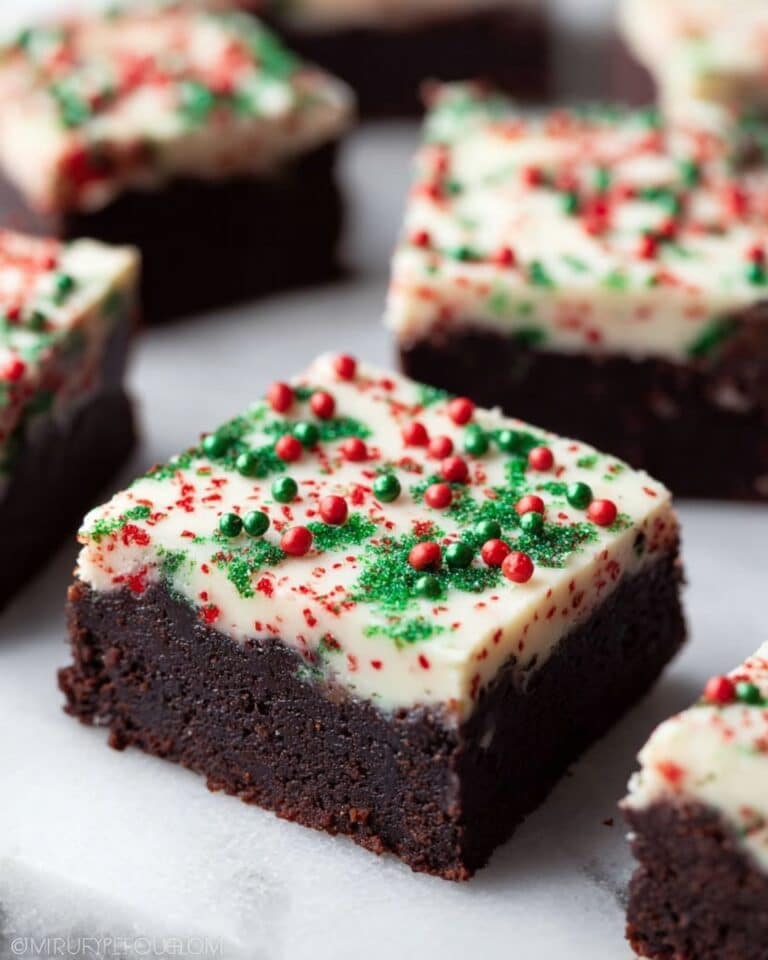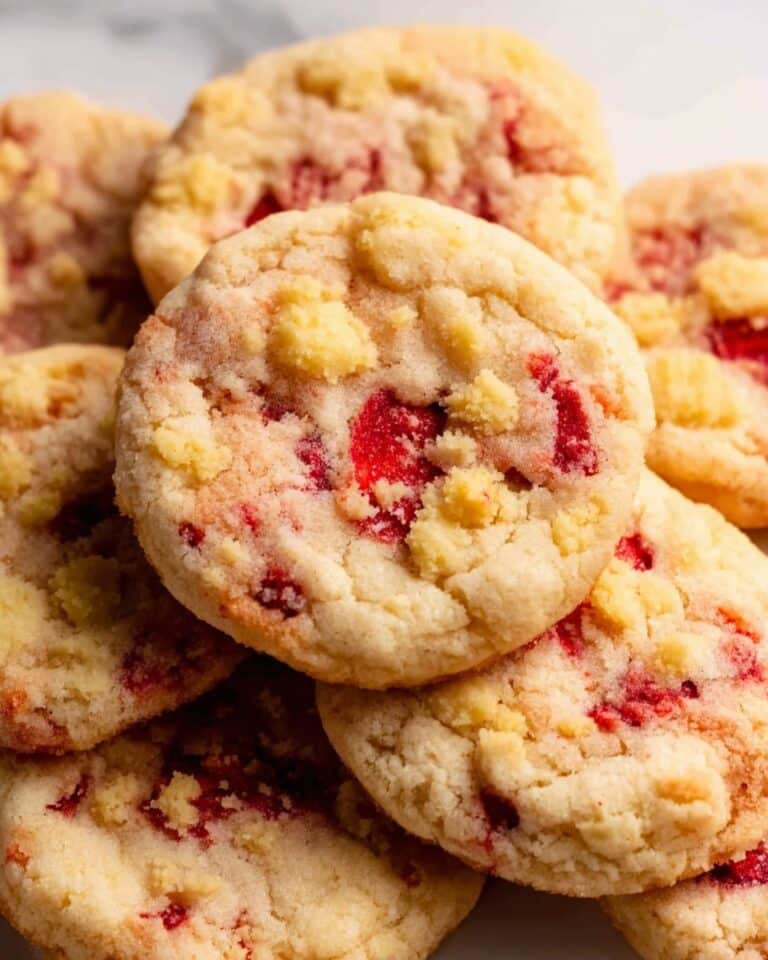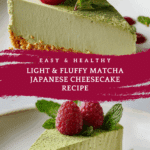Original Matcha Japanese Cheesecake Recipe
If you have been dreaming of a dessert that’s light, fluffy, and bursting with subtle earthy sweetness, then you’re about to fall head over heels for the Original Matcha Japanese Cheesecake Recipe. This delightful treat masterfully combines the creamy richness of cheesecake with the vibrant, slightly grassy notes of matcha green tea. It’s a perfect harmony of Japanese finesse and Western comfort, baked to airy perfection with a texture so soft it practically melts on your tongue. Whether you’re enjoying it as a special occasion centerpiece or a simple indulgence, this recipe delivers a mouthwatering experience that’s both beautiful and irresistibly tasty.
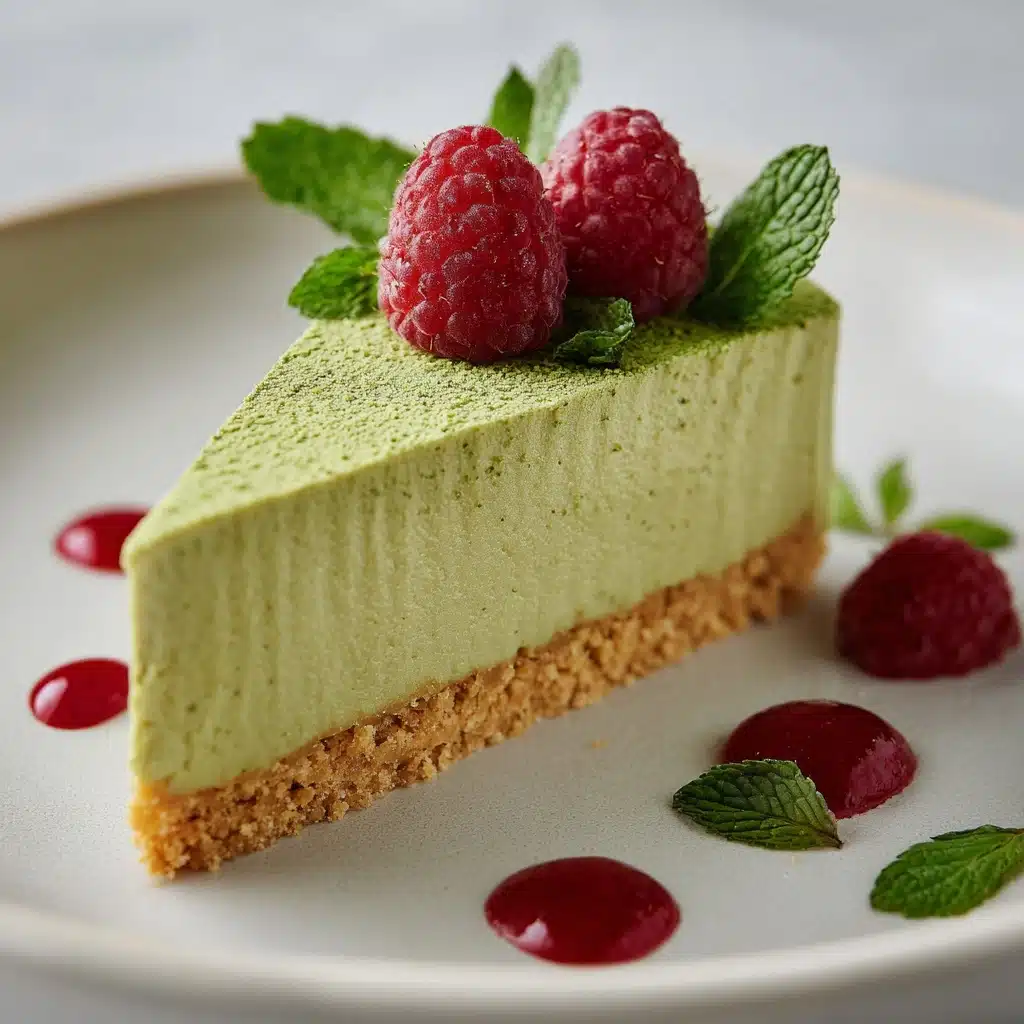
Ingredients You’ll Need
Every ingredient in this recipe plays a key role in achieving that signature moist, fluffy, and subtly flavored cake. From the cream cheese for creaminess to the culinary matcha for that vivid color and unique flavor, you’ll find that simplicity with care is what makes this cheesecake so special.
- Cream cheese (1 cup/225 g): The soulful base that provides the cheesecake’s creamy texture and tangy flavor.
- Butter (1/4 cup/55 g): Adds richness and helps keep the cake tender.
- Egg yolks (5): Give the batter body and contribute to its smoothness and color.
- Granulated sugar (1/4 cup/50 g): Sweetens the batter just right without overpowering the matcha.
- Cake flour (1/4 cup/30 g): Ensures a delicate crumb with just the right texture.
- Cornstarch (2 tablespoons/16 g): Helps stabilize the cake and maintain its fluffy structure.
- Baking powder (1/2 teaspoon): Gives that lift and airiness in every bite.
- Vanilla extract (1 teaspoon): Adds a subtle layer of sweetness and depth.
- Lemon or yuzu juice (1 teaspoon): Brightens the flavor, balancing the richness perfectly.
- Milk (1/2 cup/120 g): Hydrates and softens the batter for a smooth texture.
- Culinary matcha (1–2 teaspoons): Imparts that unmistakable green color and gentle bitterness that matcha lovers adore.
- Egg whites (5, room temperature): Whipped into stiff peaks to create the airy meringue base.
- Cream of tartar (1/2 teaspoon): Stabilizes the egg whites for perfect meringue.
- Granulated sugar (1/4 cup/50 g for meringue): Sweetens and strengthens the meringue’s structure.
- Confectioners’ sugar (1 tablespoon, optional): For a delicate final dusting and added sweetness.
- Additional matcha: For dusting the top and enhancing presentation.
How to Make Original Matcha Japanese Cheesecake Recipe
Step 1: Make the Batter
We start by melting together cream cheese and butter over low heat. This step is crucial to ensure the base is luxuriously smooth and creamy without lumps. Once off the heat, whisk in sugar and egg yolks until the mixture is uniform and glossy. Then, the dry ingredients like cake flour, cornstarch, and baking powder join the party, followed by vanilla extract, a touch of tart lemon or yuzu juice to brighten the flavors, and finally, the culinary matcha and milk. Whisk it all until silky smooth, making sure there are no stubborn spots on the pot’s sides. This rich, vibrant batter is the soul of your Original Matcha Japanese Cheesecake Recipe.
Step 2: Make Stiff Peaks Meringue
Whipping egg whites to stiff peaks might feel intimidating, but the cream of tartar works its magic to stabilize the foam. Begin beating the egg whites at medium speed, increasing gradually to high as you go. The transformation from foamy bubbles to shiny, thick meringue is mesmerizing. Slowly add sugar once white foam appears to create a glossy and stable meringue that will lift the cheesecake to cloud-like heights. This step is pure joy and the secret to the famous bouncy texture.
Step 3: Fold Meringue into Batter
Gently folding in the meringue is where patience pays off. Begin by whisking a fifth of the meringue into the batter to lighten it, then repeat twice more to fully integrate the two without deflating the air bubbles. Finally, fold the remaining meringue gently but thoroughly, ensuring you end up with a smooth, creamy batter without any white streaks. This careful folding is what guarantees your cheesecake’s tender crumb and airy lift.
Step 4: Prepare to Bake
Pour the completed batter into your prepared pan and tap it lightly to release any trapped air bubbles. Set this pan inside a larger baking dish, where you’ll add hot water to create a gentle water bath. This moist heat environment is essential for even baking and prevents cracking — a hallmark of exceptional Japanese cheesecakes. Bake first at 320°F (160°C) until the cake rises slightly, then briefly open the oven door to reduce the temperature to 285°F (140°C) and bake until the cheesecake turns a beautiful golden color.
Step 5: Let it Cool
After baking, the cake stays in the warm oven with the door ajar, allowing it to cool gradually and avoid sudden temperature shocks that could cause sinking or cracking. Once cooled, the cheesecake may deflate slightly — don’t be alarmed, this is normal and adds to that signature jiggly goodness. Unmolding can be done by gently flipping the cake onto a plate or lifting it out using the parchment collar, each method preserving the delicate shape perfectly.
Step 6: Add Toppings and Serve
Dust the cake with confectioners’ sugar and a touch more matcha powder for an elegant finish. Fresh fruits like strawberries and blueberries add a burst of freshness, while a drizzle of chocolate syrup is perfect if you love the combo of matcha and chocolate. Whether you serve this cheesecake warm and wonderfully jiggly or chilled for a denser texture, every bite is a memorable moment waiting to happen.
How to Serve Original Matcha Japanese Cheesecake Recipe
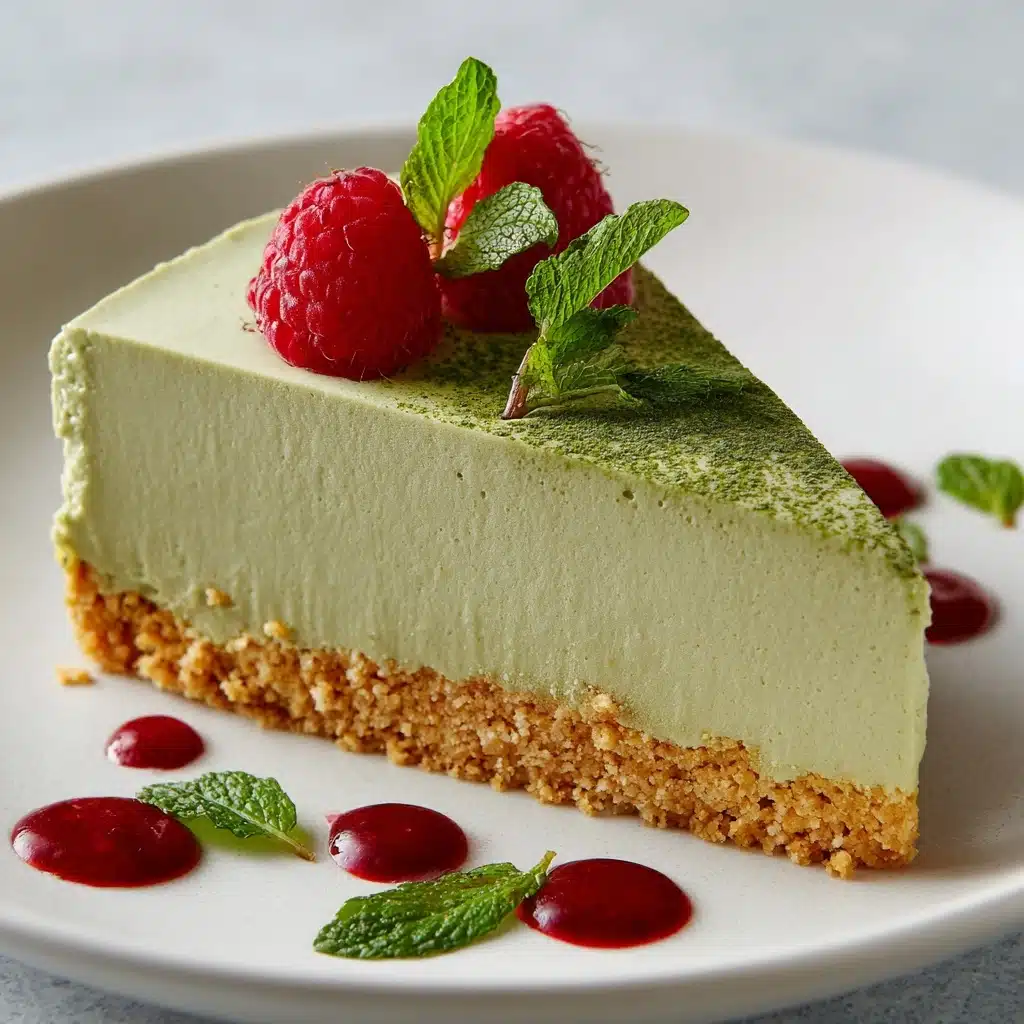
Garnishes
Simple garnishes like a light dusting of confectioners’ sugar and extra matcha powder not only add to the presentation but deepen the green tea flavor. Fresh berries are my favorite—they bring a natural sweetness and vibrant color that pairs beautifully with the cake’s delicate taste.
Side Dishes
This cheesecake shines on its own, but for a delightful afternoon tea or dessert spread, serve alongside a cup of hot green tea, sweet azuki bean paste, or a refreshing yuzu sorbet. These sides complement the matcha flavor without overwhelming it.
Creative Ways to Present
Try individual tea cups or mini springform pans for personal servings that wow guests. For a party, arrange matcha cheesecakes on a wooden board with assorted fruits and edible flowers. You can even experiment with layering the cheesecake with matcha mousse or whipped cream for an elevated treat.
Make Ahead and Storage
Storing Leftovers
Store leftover cheesecake in an airtight container in the refrigerator. It keeps well for up to 3 days while maintaining its soft, moist texture. Make sure to bring it to room temperature or chill slightly before serving to enjoy its full flavor and luscious mouthfeel.
Freezing
You can freeze this cheesecake for up to one month. Wrap it tightly in plastic wrap and then in foil or place it in a freezer-safe container. Thaw overnight in the refrigerator before serving, and gently warm if you prefer a softer consistency.
Reheating
To restore that classic jiggly softness, warm slices briefly in the microwave for 10 to 15 seconds or allow it to come to room temperature naturally. Avoid overheating as it can alter the texture. Reheating brings back the delicate creaminess and enhances the matcha aroma.
FAQs
Can I use regular green tea powder instead of culinary matcha?
Culinary matcha is specially made for cooking and has a balanced flavor with slight bitterness, perfect for this cheesecake. Regular green tea powder might lack the vibrancy and could make the taste less authentic, so it’s best to stick with culinary matcha for optimal results.
Why does the cake deflate after baking?
The deflation is completely normal for Japanese-style cheesecakes because of their light, airy structure. As it cools, the cake contracts slightly, giving it that signature jiggly texture that’s so delightful.
Can I make this cheesecake vegan or dairy-free?
Adapting this particular recipe to vegan or dairy-free versions is challenging due to cream cheese, eggs, and butter playing essential chemistry roles in texture and taste. However, some vegan cheesecakes use alternatives like tofu or cashew cream—a fun project but quite different from the Original Matcha Japanese Cheesecake Recipe.
How important is the water bath during baking?
The water bath creates a humid environment that ensures gentle, even cooking. It prevents the cake from cracking or drying out, which is crucial for that soft, moist, melt-in-your-mouth texture.
Can I add more matcha for a stronger flavor?
Yes, adjusting the amount of matcha powder is a nice way to personalize the flavor. Start with 1 teaspoon if you prefer mild taste and increase to 2 teaspoons if you love an intense green tea essence. Just be careful not to add too much or it might make the cake bitter.
Final Thoughts
There’s something truly magical about the airy, smooth, and subtly sweet Original Matcha Japanese Cheesecake Recipe that makes it a treasured classic in any baker’s repertoire. It’s a recipe that brings a smile with every bite and impresses effortlessly whether for family, friends, or moments of self-indulgence. I wholeheartedly encourage you to try making it yourself—you’ll discover just how rewarding baking this cheesecake can be, and once you take that first forkful, it’s sure to become one of your all-time favorites too.
Print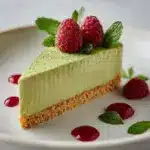
Original Matcha Japanese Cheesecake Recipe
- Total Time: 1 hour 40 minutes
- Yield: 8 servings 1x
- Diet: Vegetarian
Description
This Original Matcha Japanese Cheesecake combines the delicate flavors of creamy cheesecake with the earthy, vibrant notes of culinary matcha. Light, fluffy, and softly jiggly, this cake is baked in a water bath to achieve its signature smooth texture and is perfect served warm or chilled with optional toppings like confectioners’ sugar, fresh fruit, or chocolate syrup.
Ingredients
For the batter
- 1 cup (225 g) cream cheese
- 1/4 cup (55 g) butter
- 5 egg yolks
- 1/4 cup (50 g) granulated sugar
- 1/4 cup (30 g) cake flour
- 2 tablespoons (about 16 g) cornstarch
- 1/2 teaspoon baking powder
- 1 teaspoon vanilla extract
- 1 teaspoon lemon or yuzu juice
- 1/2 cup (120 g) milk
- 1 to 2 teaspoons culinary matcha powder
For the stiff peaks meringue
- 5 egg whites, room temperature
- 1/2 teaspoon cream of tartar
- 1/4 cup (50 g) granulated sugar
For the toppings (optional)
- 1 tablespoon confectioners’ sugar
- Matcha powder for dusting
- Fresh fruits such as strawberries and blueberries
- Chocolate syrup
Instructions
- Make the batter: In a pot over low heat, stir together the cream cheese and butter until smooth and creamy. Remove from heat. Whisk in the sugar and egg yolks until well combined. Add the cake flour, cornstarch, baking powder, vanilla extract, lemon or yuzu juice, matcha powder, and milk. Whisk until fully incorporated, scraping down the sides as needed. Set aside.
- Make stiff peaks meringue: Beat the egg whites at medium speed. Gradually increase speed to medium-high and then high, allowing 2–3 minutes at each speed. When foam appears, add cream of tartar. As egg whites turn white and foamy, slowly add sugar. Continue beating until firm, glossy stiff peaks form.
- Combine batter and meringue: Add one-fifth of the meringue to the batter and gently whisk to combine. Repeat this two more times. Next, fold in the remaining meringue gently until the mixture is smooth, creamy, and free of white streaks. Pour into the prepared pan, tap to release air bubbles, and smooth the top.
- Bake the cake: Place the cake pan inside a larger baking dish. Carefully pour hot water into the outer baking dish to a depth of about 1.5 inches. Bake at 320°F (160°C) for 18 minutes until the cake rises slightly. Briefly open the oven door for about 10 seconds, then reduce temperature to 285°F (140°C) and continue baking for 50–60 minutes until golden and cooked through.
- Cool the cake: Turn off the oven, leave the door ajar, and let the cake sit inside for 20 minutes. Remove from the oven; the cake will deflate slightly. To unmold, invert the cake onto a plate, peel off parchment paper, then flip again onto a serving dish or lift it out using the parchment collar.
- Add toppings and serve: Dust the top with confectioners’ sugar and matcha powder if desired. Add fresh fruits such as strawberries and blueberries or drizzle with chocolate syrup for extra flavor. Serve warm and jiggly for a soft texture or chill overnight for a firmer consistency.
Notes
- Use room temperature eggs to ensure better volume when whipping meringue.
- Adjust matcha powder quantity for desired intensity of green tea flavor.
- Baking in a water bath prevents cracking and creates the cheesecake’s creamy texture.
- Allow the cake to cool gradually in the oven to prevent sudden temperature changes that can cause shrinking or cracking.
- Chilling the cake overnight gives a denser texture preferred by some, while serving warm offers a delicate, jiggle texture.
- Optional toppings like fresh fruit or chocolate syrup add complementary flavors but can be omitted for a pure matcha experience.
- Prep Time: 25 minutes
- Cook Time: 1 hour 15 minutes
- Category: Dessert
- Method: Baking (water bath)
- Cuisine: Japanese
Nutrition
- Serving Size: 1 slice (approximately 100g)
- Calories: 250 kcal
- Sugar: 18 g
- Sodium: 120 mg
- Fat: 16 g
- Saturated Fat: 10 g
- Unsaturated Fat: 5 g
- Trans Fat: 0 g
- Carbohydrates: 19 g
- Fiber: 1 g
- Protein: 5 g
- Cholesterol: 110 mg
Keywords: matcha cheesecake, Japanese cheesecake, green tea cheesecake, fluffy cheesecake, water bath cheesecake, Japanese dessert, matcha dessert

